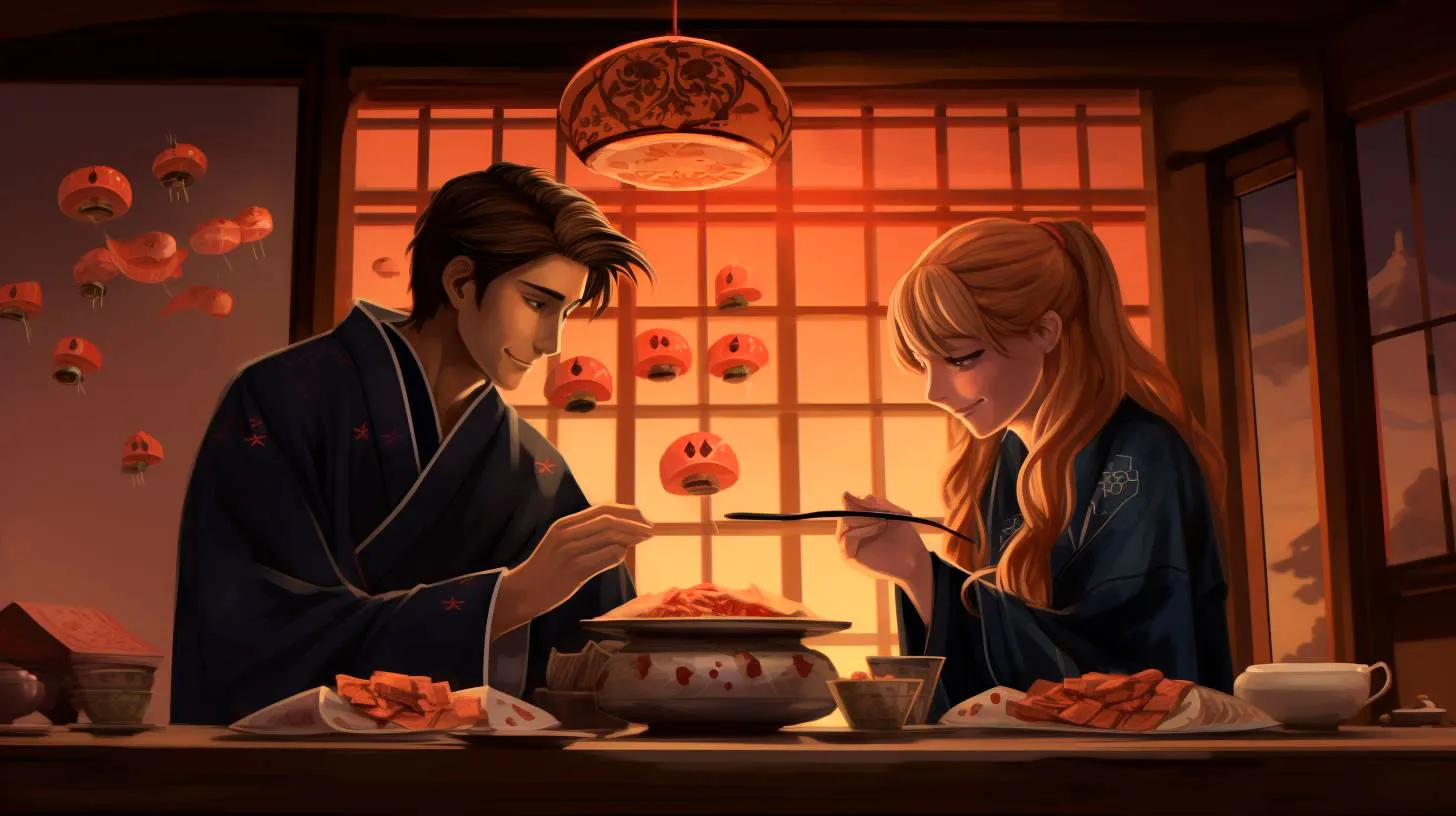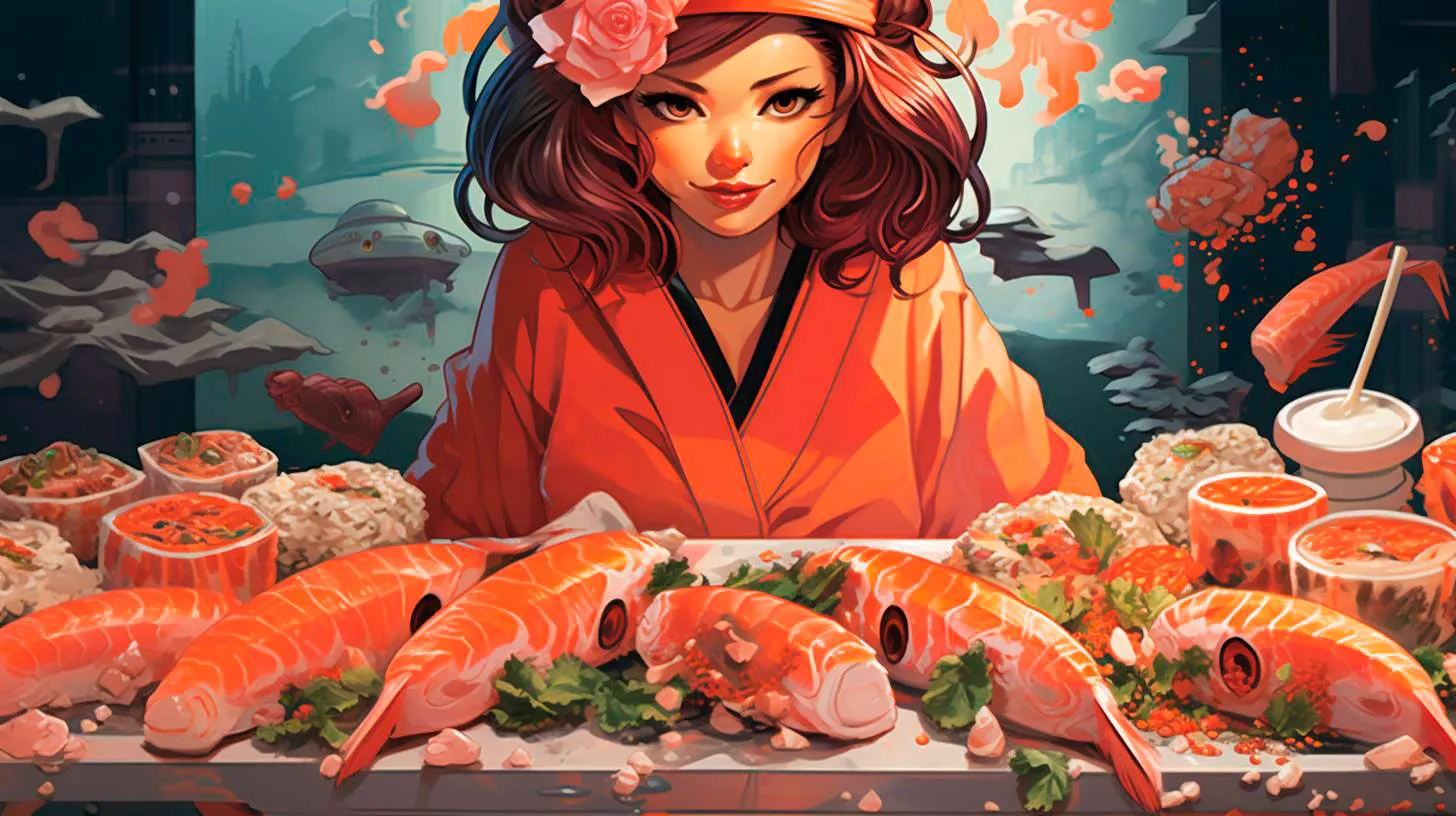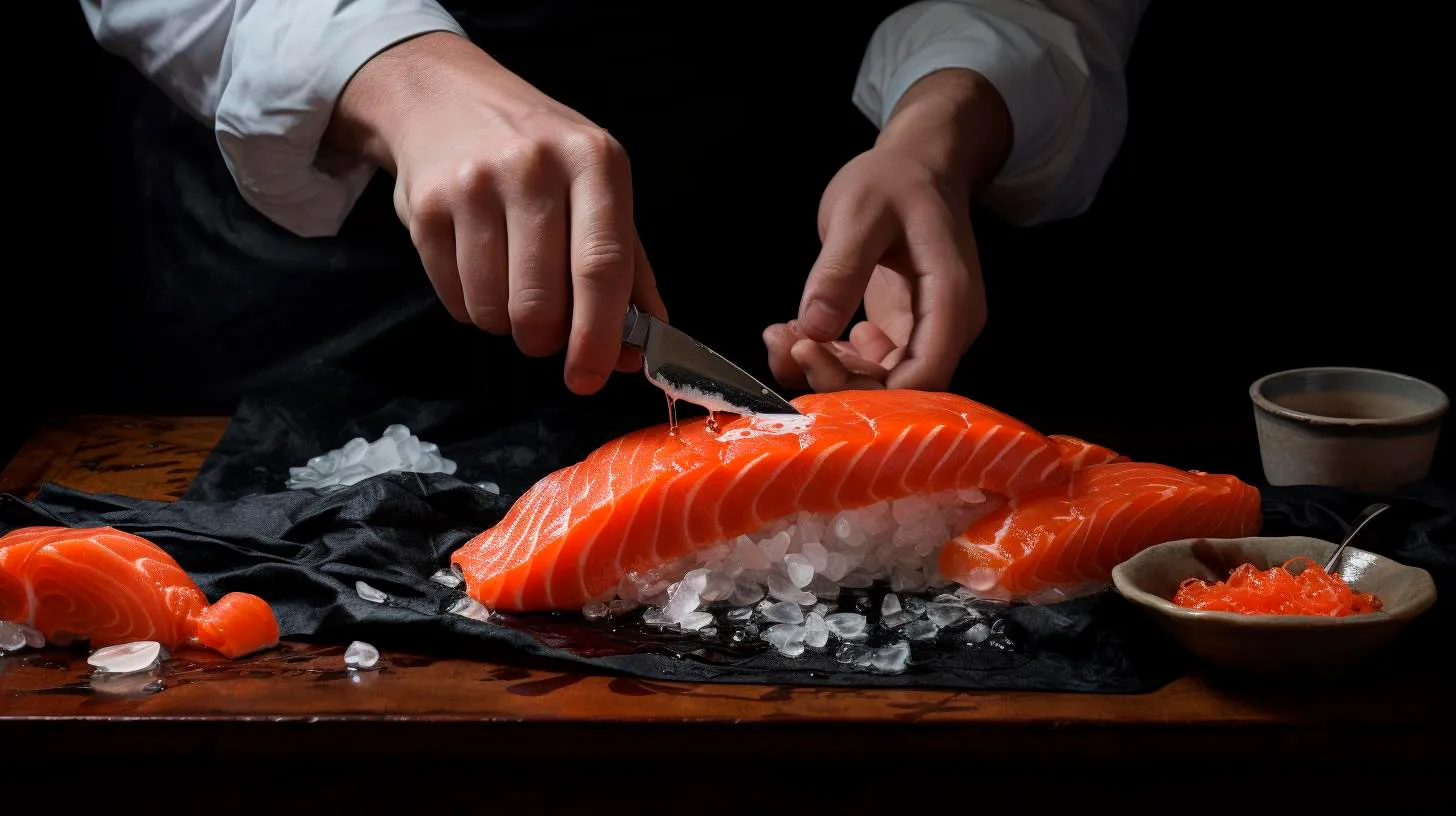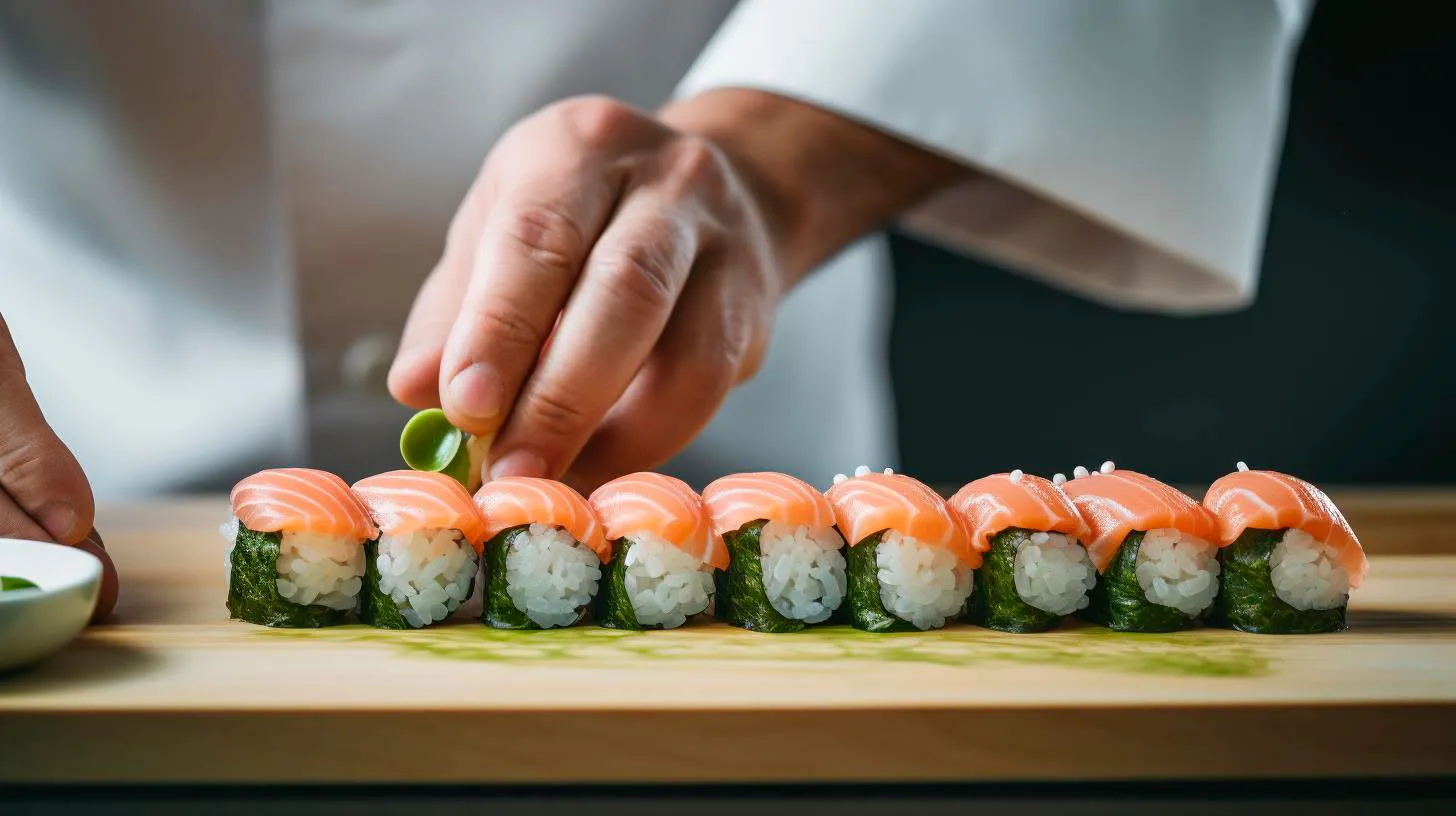From Samurai to Sushi: Rediscovering the Artistic Traditions That Shape Japanese Cuisine
In this article, we delve into the historical roots and creative nuances that make Japanese cuisine truly remarkable.
1. Samurai Bushido and the Transformation of Food
During the feudal era of Japan, the samurai warriors played a significant role in shaping the country’s cultural evolution. While their primary duty was to protect their lords, the samurai also had a strong influence on food and its preparation. The samurai lived by the code of bushido, which emphasized discipline, loyalty, and honor. This mindset extended to their approach to cooking and dining.
- Simple Presentation: Samurai-inspired cuisine focuses on minimalism and simplicity. Dishes are presented in an elegant yet understated manner, allowing the natural flavors and colors to shine through.
- Seasonality: In line with the samurai’s connection to nature, Japanese cuisine emphasizes the use of locally sourced, seasonal ingredients. This not only enhances the freshness of the dishes but also promotes sustainability.
- Presentation Techniques: The samurai valued precision and attention to detail – principles that are mirrored in Japanese cuisine. From the intricate knife skills to the art of arranging food on the plate, every aspect is carefully considered.
2. Zen Buddhism and the Art of Tea
In the 12th century, Zen Buddhism found its way to Japan, introducing a new philosophy that greatly influenced the country’s culinary traditions. One of the most profound impacts was seen in the art of tea ceremony, which embodies balance, harmony, and mindfulness.
“Tea is the ultimate mental and medical remedy, and has the ability to make one’s life more full and complete.” – Myoan Eisai, Zen Buddhist Monk
- Simplicity in Tea and Food: The tea ceremony celebrates simplicity, focusing on green tea prepared in an uncomplicated manner. This notion of simplicity also extends to Japanese cuisine, with an emphasis on clean flavors and simple, elegant preparation methods.
- Attention to Detail: A tea ceremony is a highly choreographed event, with every movement meticulously planned and executed. This attention to detail is reflected in the preparation and presentation of Japanese dishes, creating a feast for both the eyes and the palate.
- Promotion of Mindfulness: Zen Buddhism promotes being present in the moment and cherishing each experience. This philosophy flows into Japanese cuisine, where mindful eating is encouraged. Considerable importance is placed on savoring each bite, appreciating the textures and tastes as they unfold.
3. Haiku and Culinary Poetry
Haiku, the iconic form of Japanese poetry, evokes imagery and emotion within a limited structure of just three short lines. This concise yet profound art form has influenced various aspects of Japanese culture, including cuisine.
“First, I will serve sushi. Then the world!” – Matsuo Basho, Haiku Poet
- Harmony of Ingredients: Haiku often explores the natural world and captures a single moment or scene. Similarly, Japanese cuisine aims to harmonize different flavors and textures, creating a meticulously balanced dish. Each ingredient has a purpose and contributes to the overall harmony of the meal.
- Embracing Imperfections: Haiku celebrates imperfections and the beauty found in simplicity. Similarly, Japanese cuisine emphasizes natural and imperfect shapes in food presentation. This philosophy of wabi-sabi acknowledges the transient and imperfect nature of life.
- Visual Poetry on the Plate: Just like a haiku evokes powerful imagery within its limited structure, Japanese cuisine strives to create visual poetry on the plate. The use of vibrant colors, carefully arranged components, and negative space all contribute to a visually pleasing and emotionally resonant dining experience.
Key Takeaways
Japanese cuisine is a testament to the country’s cultural heritage, with influences ranging from samurai tradition to Zen Buddhism and haiku poetry. By exploring these historical and artistic connections, we gain a deeper appreciation of the culinary excellence that Japan delivers.
Key takeaways from this article include:
- Samurai culture influenced Japanese cuisine through principles such as minimalism, seasonality, and careful presentation.
- Zen Buddhism emphasized simplicity, attention to detail, and mindfulness, which are mirrored in the tea ceremony and Japanese cooking.
- Haiku poetry’s focus on harmony, imperfection, and visual imagery can be seen in the balance of flavors, wabi-sabi aesthetics, and artistic plating of Japanese dishes.
Next time you savor a plate of sushi or experience the tranquil ambiance of a tea ceremony, remember the rich tapestry of history, culture, and artistry that has shaped Japanese cuisine into the exquisite masterpiece it is today.
Mastering the Way of the Sushi Warrior: A Journey into Samurai-inspired Culinary Skills
In this blog article, we embark on a journey into the world of the Sushi Warrior, exploring the historical origins, culinary techniques, and key takeaways of this samurai-inspired culinary art.
The Origins of the Sushi Samurai
To understand the bond between sushi and the Samurai, we must first delve into their origins.
Samurai and Bushido: The Samurai were the revered warriors of ancient Japan, known for their unwavering loyalty, discipline, and skill in the battlefield. They lived by the code of Bushido, which emphasized moral principles such as honor, loyalty, and self-discipline.
The Evolution of Sushi: Sushi, originally known as narezushi, was created as a preservation technique in Southeast Asia around the 2nd century AD. Over time, sushi evolved into an art form when it reached Japan in the 8th century AD. The Samurai warriors embraced sushi as a nutritious and easily portable source of sustenance during their battles.
The Culinary Techniques of the Sushi Warrior
The path of the Sushi Warrior requires a mastery of fundamental culinary techniques. Let’s explore some of these techniques:
1. Knife Skills:
- Samurai-inspired sushi chefs must possess exceptional knife skills, as precision is the key to creating beautifully sliced fish.
- It is believed that these chefs approach their knives with the same level of honor and respect that Samurai warriors held for their swords.
2. Rice Mastery:
- The foundation of sushi lies in perfectly seasoned sushi rice.
- Samurai-inspired chefs pay meticulous attention to the rice, ensuring the ideal balance between flavor, texture, and stickiness.
3. Art of Presentation:
- Sushi is not just about taste; it is a visual feast.
- The Sushi Warrior understands the importance of presenting each piece of sushi with artistic flair, creating a visually stunning masterpiece.
4. Ingredient Selection:
- Like Samurai warriors who carefully selected their weapons, the Sushi Warrior chooses only the finest and freshest ingredients.
- From the quality of fish to the seasonality of vegetables, every ingredient must meet the highest standards.
The Advantages of Sushi Mastery
Beyond the enchanting history and skills involved, mastering the way of the Sushi Warrior offers several advantages:
1. Health Benefits:
- Sushi, predominantly made with fresh fish, is packed with omega-3 fatty acids, vitamins, and minerals beneficial for heart health.
- Additionally, the combination of fish and rice provides a balanced source of protein, carbohydrates, and essential nutrients.
2. Creativity and Expression:
- Becoming a Sushi Warrior allows individuals to tap into their creativity and artistic abilities.
- Each sushi roll is an opportunity for personal expression, enabling chefs to explore new flavors, combinations, and presentations.
3. Social Connection:
- Sushi has a unique ability to bring people together.
- Mastering sushi-making skills can open doors to sharing meals, creating memories, and fostering meaningful connections within communities.
Key Takeaways for Aspiring Sushi Warriors
Embarking on the journey to become a Sushi Warrior requires dedication, discipline, and a passion for Japanese culinary art. As you dive into this ancient tradition, keep the following key takeaways in mind:
1. Respect Tradition:
- Honor the history and traditions associated with sushi, paying homage to the Samurai warriors and their dedication to perfection.
2. Embrace Continuous Learning:
- Never stop honing your skills and exploring new techniques, ingredients, and sushi styles.
- Embrace the mindset of a perpetual student, always seeking to improve and innovate.
3. Simplify Complexity:
- While sushi-making can seem complex, remember that simplicity and subtlety are at the core of this art form.
- Focus on perfecting the basics and mastering the delicate balance of flavors.
Embarking on the path of the Sushi Warrior is not just about preparing delicious food but about embracing a way of life. The convergence of ancient warrior values and culinary artistry creates a mesmerizing and meaningful experience. So, grab your sushi knife and embark on this extraordinary journey that combines the spirit of the samurai with the delights of the culinary world. Discover the celebrated intersection between history, tradition, and the art of sushi-making as you become a true Sushi Warrior!
The Ancient Precision Secrets of Samurai Techniques in Sushi Making
Samurai warriors were known for their unwavering commitment to excellence and attention to detail. These same principles are mirrored in the meticulous process of sushi making. Let’s take a closer look at how the precision secrets of samurai techniques have influenced the creation of this beloved culinary art.
The Perfect Rice – The Foundation of Sushi
One of the most important aspects of sushi making is mastering the art of cooking the perfect sushi rice, or shari. Just like a samurai meticulously sharpens their katana, sushi chefs dedicate themselves to crafting the exact texture and flavor of the rice.
- The rice used for sushi must be short-grain and have a high starch content to achieve the desired stickiness.
- A delicate balance of vinegar, sugar, and salt is added to the rice to create the signature taste that complements the fish or other ingredients.
- Proper handling and fluffing of the rice is crucial to maintain its stickiness and prevent it from clumping.
The attention to detail required in preparing the perfect rice is reminiscent of the samurai’s dedication to honing their sword skills. Both crafts demand patience, practice, and a commitment to the pursuit of perfection.
Slicing Techniques – The Precision Strikes of Sushi Making
Just as the samurai’s sword strikes were calculated for maximum impact, sushi chefs employ a variety of slicing techniques to accentuate the flavors and textures in each piece of sushi.
- The hira-zukuri technique involves cutting the fish at a 45-degree angle, creating an elongated slice that showcases its delicate texture.
- The usuzukuri technique produces paper-thin slices, allowing the fish’s natural flavors to shine through.
- The kiritsuke technique requires exceptional knife skills, combining both slicing and chopping movements to create a visually appealing presentation.
A sushi chef’s ability to execute these precise cuts is a testament to their expertise and pays homage to the disciplined approach of the samurai in battle. Each slice is a carefully calculated strike, ensuring the ultimate dining experience for sushi connoisseurs.
Patience and Discipline – The Zen of Sushi Making
Just as the samurai honed their mental and physical strength through rigorous training, sushi chefs embrace a similar philosophy in their craft. The process of sushi making requires immense patience and discipline, much like the samurai’s commitment to mastering the art of warfare.
- Sushi chefs undergo years of training to acquire the necessary skills and knowledge to create exceptional sushi.
- They must learn to work in harmony with their tools, such as the delicate bamboo sushi mat used to roll maki sushi.
- Attention to detail and focus are crucial in every step, from selecting the freshest ingredients to plating each dish with finesse.
By cultivating a zen-like mindset throughout the sushi-making process, chefs can infuse their creations with a sense of harmony and balance. This discipline is a tribute to the samurai’s unwavering dedication to achieving excellence in all aspects of their lives.
The Key Takeaways – Where Samurai Meets Sushi
- Sushi making is a culinary art form deeply rooted in tradition and influenced by the precision secrets of samurai techniques.
- Mastering the art of sushi requires patience, discipline, and attention to detail, much like the way of the samurai.
- The perfect rice, slicing techniques, and the zen-like mindset are essential elements in creating exceptional sushi.
- Sushi chefs and samurai warriors share a dedication to excellence and a pursuit of perfection in their respective crafts.
Next time you savor a piece of meticulously crafted sushi, take a moment to appreciate the centuries-old connection between the precision secrets of samurai techniques and the art of sushi making. It is a testament to the enduring legacy of these ancient traditions and the impact they continue to have on our modern world.
The Artistry of Sushi: Unraveling the Age-Old Methods of Samurai Chefs
In this article, we dive deep into the age-old methods and practices that make sushi a culinary masterpiece.
The Origins of Sushi
The history of sushi dates back to ancient times when it was originally developed as a means of preserving fish. The practice of fermenting fish with rice allowed the preservation of the catch for several months. This technique eventually evolved into what we now know as sushi.
As time went on, sushi became more than just a preservation method. It began to be regarded as a delicacy, favored by the Japanese elite. The techniques used to create sushi were passed down through generations of chefs, each adding their unique flair and expertise.
The Role of Samurai Chefs
Samurai chefs, also known as Itamae, were revered for their exceptional skill and dedication to their craft. Known for their precision and attention to detail, these culinary masters were trusted with the important task of creating exquisite sushi.
With the rise of sushi’s popularity worldwide, traditional sushi-making techniques have spread beyond Japan’s borders. However, the true artistry lies within the hands of these ancient Samurai chefs, who have dedicated their lives to the pursuit of perfection.
The Craftsmanship Behind Sushi
Creating the perfect sushi requires a combination of technical skill, artistic vision, and the finest ingredients. Here are some key techniques used by Samurai chefs:
- Nigiri: One of the most popular types of sushi, nigiri is a combination of vinegar-seasoned rice and a slice of raw fish. The rice must be the perfect texture and temperature, and the fish must be sliced with precision to create a harmonious balance of flavors.
- Maki: Maki sushi is made by rolling rice and various ingredients in a sheet of seaweed called nori. The roll is then sliced into bite-sized pieces. Samurai chefs take great care in arranging the ingredients and rolling them tightly to ensure a visually appealing and delicious result.
- Sashimi: Sashimi is thinly sliced raw fish served without rice. The fish must be of the highest quality, and precise knife skills are required to achieve the perfect thickness and texture.
The Advantages of Traditional Sushi Techniques
While modern innovations have simplified sushi-making processes, the traditional methods of Samurai chefs offer several advantages:
- Preserving Tradition: Embracing traditional techniques keeps the artistry and cultural significance of sushi alive.
- Superior Quality: The meticulous attention to detail ensures that each piece of sushi is of the highest quality, offering an unparalleled dining experience.
- Flavor Harmony: The precise techniques employed by Samurai chefs guarantee that each ingredient is balanced in flavor, texture, and appearance.
- Visual Appeal: Traditional sushi making often focuses on the aesthetic presentation, elevating the dining experience and pleasing both the eyes and palate.
Key Takeaways
The artistry of sushi is a testament to the skill, dedication, and rich history of Samurai chefs. Their age-old techniques have been perfected over generations, creating a culinary experience that transcends borders.
Whether you’re indulging in nigiri, maki, or sashimi, take a moment to appreciate the craft that has gone into each delicately prepared piece. Sushi is not just a meal; it’s an art form, and the Samurai chefs are the masters behind the canvas.
So, the next time you savor a piece of sushi, remember the rich history and tradition that brought it to your plate.



